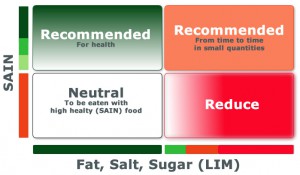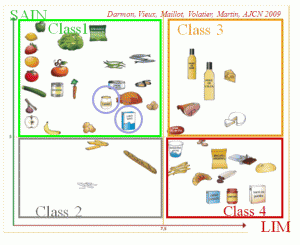Yogurt is a nutrient-dense, tasty, handy and easily digested product to help people reach their daily dairy intake without excess calories. Replacing less healthy snacks and foods with yogurt is a simple way to re-establish healthier daily dietary habits.
Guidelines: the ‘Ideal’ healthy snacks
- Consuming products with a low energy density should be more satiating as, for the same number of calories, one would have to eat more of those foods (in volume).
- An ‘ideal’ healthy snack should have a high nutrient density and promote the feeling of satiation/satisfaction.
- Where weight control and obesity are a concern, an ideal snack should also have a low energy density.
- Yogurt is a nutrient-dense, tasty, handy and easily digested product to help people reach their daily dairy intake without excess calories.
- Replacing less healthy snacks and foods with yogurt is a simple way to re-establish healthier daily dietary habits.
A step further
Nutrient versus energy density: glossary (1,2)

- Nutrient density* describes the ratio of nutrients (in grams) to energy content (in joules or calories) of any particular food.
- Energy density* describes the amount of calories per gram of food. Its use helps consumers evaluate the energy provided by snacks through a given mass/volume ratio.
*calculation varies according to country
Snacking: what is a healthier alternative?
- An unhealthy snack can be described as having a low nutrient content and a high energy density, and failing to satiate, thus potentially promoting the craving for further consumption.
- An ‘ideal’ healthy snack would therefore have a high nutrient density and promote a feeling of satiation and satisfaction, which may limit its excessive consumption.
Relevance of yogurt today
- According to the Nutrient Rich Foods (NRF) Index and the SAIN/LIM Index, 2 systems to rank foods according to their nutritional content validated in the USA and FRANCE, milk and yogurt are the second most nutrient-dense group of foods, behind vegetables and fruits (2, 7).

- Yogurt is a good source of protein, calcium and phosphorus, and also contains zinc and vitamin B2, B12, B5, B9 and A. The bioavailability of these nutrients in yogurt is also generally good (3).
- The proteins in yogurt contain all 9 essential amino acids and are of a higher quality than proteins from plant sources (4).
- Yogurt has a much lower energy density than most cheeses (5).
- The consumption of dairy, including yogurt but not cheese, is associated with a reduced incidence of type 2 diabetes and lower fasting blood glucose levels (6).
Sources:
- Dietary Guidelines for Americans, 2010. Available at www.dietaryguidelines.gov
- Drewnowski A. Concept of a nutritious food: toward a nutrient density score. Am J Clin Nutr. Oct 2005; 82 (4) : 721-32
- Gaucheron F. Milk and dairy products: a unique micronutrient combination. J Am Coll Nutr. 2011; 30 (5 Suppl1) : 400S-9S
- Bos C et al. Nutritional and physiological criteria in the assessment of milk protein quality for humans. J Am Coll Nutr. 2000 ; 19 (2 Suppl) : 191S-205S
- French food composition table, Table Ciqual 2008. Available at http://www.ansespro.fr/TableCIQUAL/
- Fumeron F et al. Dairy consumption and the incidence of hyperglycemia and the metabolic syndrome: results from a French prospective study. Data from the Epidemiological Study on the Insulin Resistance Syndrome (DESIR). Diabetes Care 2011 ; 34 (4) : 813-7
- Darmon N et al. Am J Clin Nutr April 2009 vol. 89 no. 4 1227-1236



